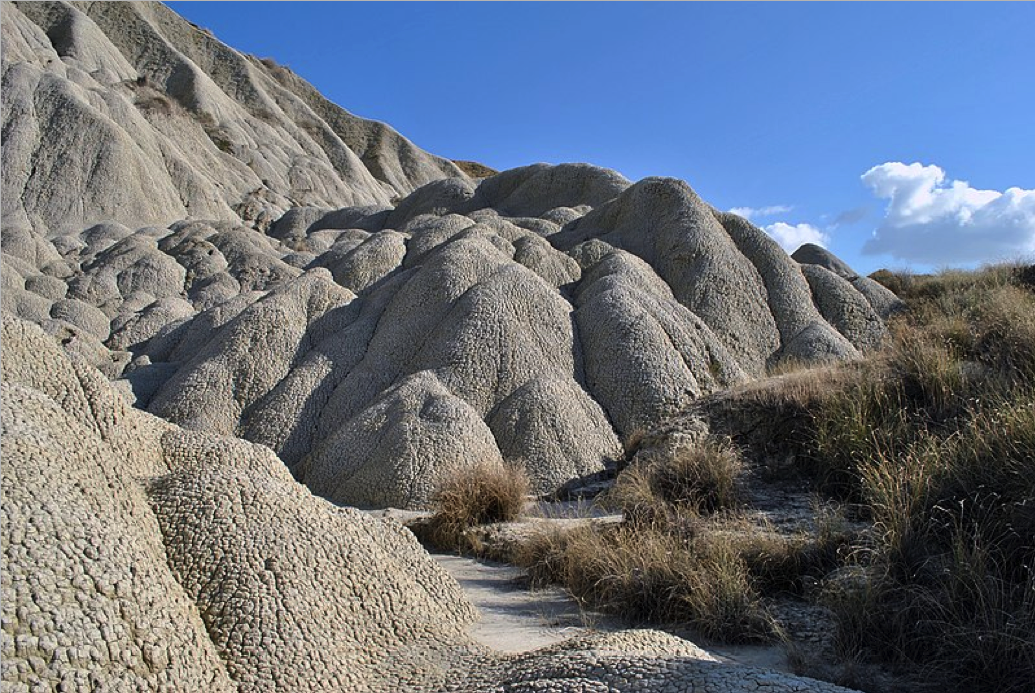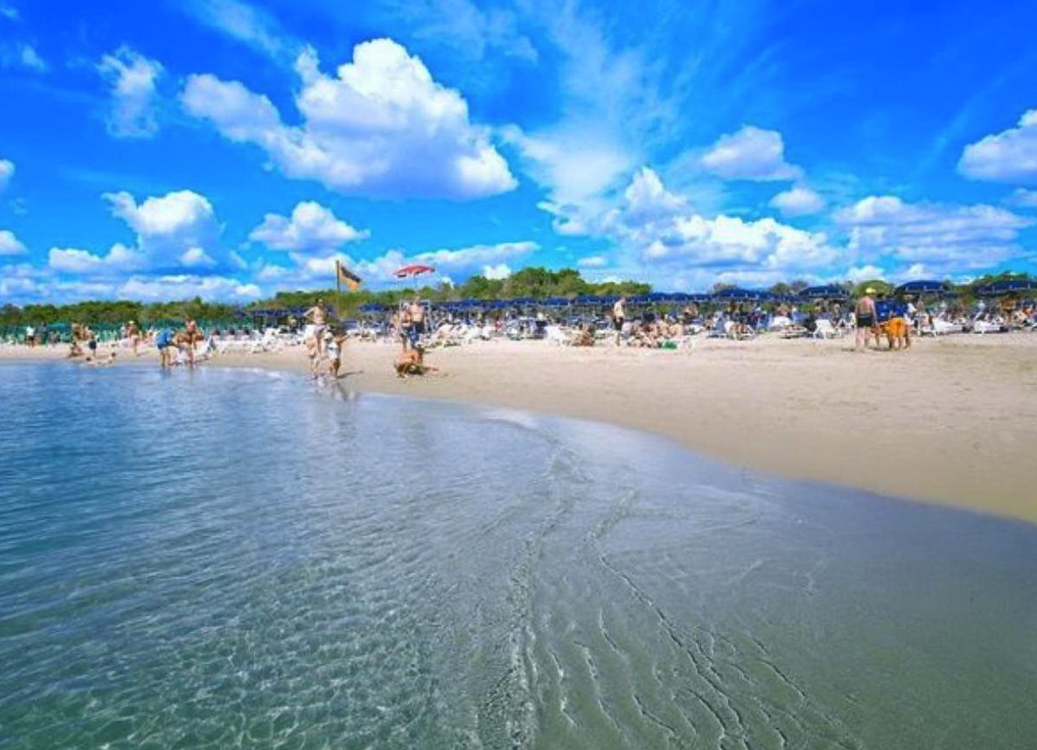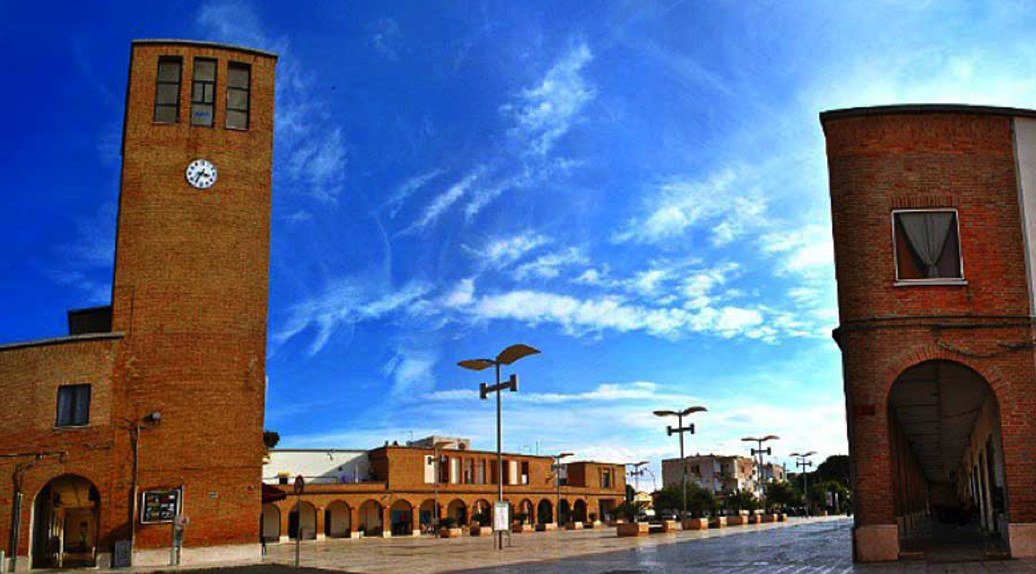Pisticci rises in the central-southern part of the province of Matera and extends between the rivers Basento, and Cavone.The territory is composed of several villages, including Marconia, Pisticci Scalo and Marina di Pisticci. The hills on which the old town is located, are in the west part, where the clay soil is characterized by deep grooves, the badlands.. In the eastern part of the territory, however, there is a plateau that slopes gently towards the Metaponto plain and the 8 km of coast. Given its strategic position, it is called “Il balcone sullo Jonio”(the balcony on the Ionian Sea)..


THINGS NOT TO MISS
Terravecchia
It is the highest and oldest part of the town from which in 1688 the current district Dirupo collapsed. Here are located the Castle, the ancient door of the village, the Mother Church, the Church of the Annunziata, several noble palaces and the tower of the aqueduct of Agri, of the Fascist era.
Dirupo
Formerly called Casalnuovo, it later took its name from the disastrous landslide of 1688, on the ruins of which it was built. It’s characterized by lammies, typical white houses lined with simple and spontaneous architecture.
L’Abbazia del Casale (abbey)
It was presumably built around 1087 on the ruins of an ancient Greek-Byzantine monastery by Rodolfo Maccabeo and Emma d’Altavilla. The abbey was one of the shrines of the Jubilee of 2000.
The Mother Church
It stands on the remains of a pre-existing church of 1212, of which remains the bell tower with two orders of mullioned windows. The current building was finished in 1542, with the construction of two other naves in addition to that of the previous church, The church is of Romanesque-Renaissance style.
The Church of the Immacolata Concezione
Small church built around the sixteenth century. It has a Latin cross plan and a wooden ceiling with a ship’s hull, painted in tempera with floral decorations and holy figures. The altar is in baroque style.
The “Calanchi”
Extraordinary landscape and naturalistic heritage, the gullies (Calanchi), geological conformations of clay, take the form of real sculptures of great suggestion, from those to “knife blade” up to the “biancane”. Lately, they are home to audio-visual productions.
Piazza Elettra in Marconia
Built in 1940, Piazza Elettra is an example of “rural square” of the fascist period and, therefore, respectful of the canons indicated by the regime, with a porticoed space the Littoria Tower, the municipal house, the post office, etc.
The Castle of San Basilio
It was built as a fortified farm around the 7th century by the monastic community of Basilians. It then became a Norman feud, increasingly assuming the characteristics of a castle with the construction of the central tower. It was later donated by the Norman feudal lords to the Benedictine community of the abbey of Santa Maria del Casale in Pisticci.
The archaeological site of the Incoronata
It is a hilly area on the right bank of the Basento where the remains of a village dating back to the 9th century B.C. and of a later phase Greek built over the previous village have emerged. You can now visit the remains of the town, while the objects and various finds found in the surrounding area are exhibited at the National Archaeological Museum of Metaponto.
The golden beaches of the Ionian Sea
Along the coast you will encounter the wild landscapes of Marina di Pisticci. From the mouth of the Basento, where the Porto Degli Argonauti is located, to that of the Cavone, a very long sandy carpet of the beaches of San Basilio, San Teodoro and Macchia is explored.
GASTRONOMIC EXCELLENCE
The traditional cuisine is typical of the South: simple dishes of the peasant tradition with homemade pasta, vegetables and pork from which sausages and soppressate are produced. Thetypical pasta is represented by “l tapparédd” (diamond-shaped), “l rucchëlë” (concave dumplings), “l tagghiariédd” (“tagliolini”), grilled macaroni and orecchiette, with sauces. “Tagliolini” and “ruccoli” are also suitable for dishes with cooked vegetables: “ruccoli” with turnip tops, while “tagliolini” are good with chickpeas, beans or peas. Typical vegetables are broad beans and chicory (“faf and ciuquèrë”),”lambasciùn” (onions). The typical Christmas sweets are the“pettole”, the “‘ngartagghiat” (“cartellate”), the “purcëdduzzë” (“porcellini”)


TOURIST SERVICES
EVENTS
Lucania Film Festival: first international film festival in Basilicata
Teatro dei Calanchi: one of the most original Italian artistic events
Enotria Felix: event that tells and makes rediscover the history of Pisticci at the turn of 1500 and 1600 and enhances the peculiarities of metapontine food and wine
Patron Feast of San Rocco: one of the oldest and most heartfelt festivals of Basilicata
HIKING
Fosso (ditch) La Noce: naturalistic area characterized by the presence of valuable fauna and floral species, SIC/ZPS area (Site of Community Interest/Special Protection Area).
Calanchi: clay site of enormous naturalistic and landscape value, with lunar features.
TOURIST EXPERIENCES:
The old town center, in its entirety, with focus on the oldest districts of the country: Terravecchia, Dirupo, Osannale, Tredici, Marco Scerra, Convento.
FOCUS
3 UNMISSABLE PROPOSALS
1. The“Agosto pisticcese” (Pisticcese August), a program of artistic and cultural events, among which the Lucania Film Festival, the Teatro dei Calanchi, Enotria Felix and the Patron Saints’ Day in honor of San Rocco;
2. “Calanchi” surrounding the village. Ancient geological site, dominated by huge clay deposits, with great naturalistic and landscape value;
3. The beaches of the Ionian Sea: 8 km of fine golden sands that host important natural sites, recognized by the European Union.
CONTACTS
Avv. Rossana Florio, Councillor for Tourism of the Municipality of Pisticci – tel 339 2600863 – email: floriorossan@gmail.com
Massimiliano Selvaggi, 331 88 30663 – email: massimilianoselvix@gmail.com











